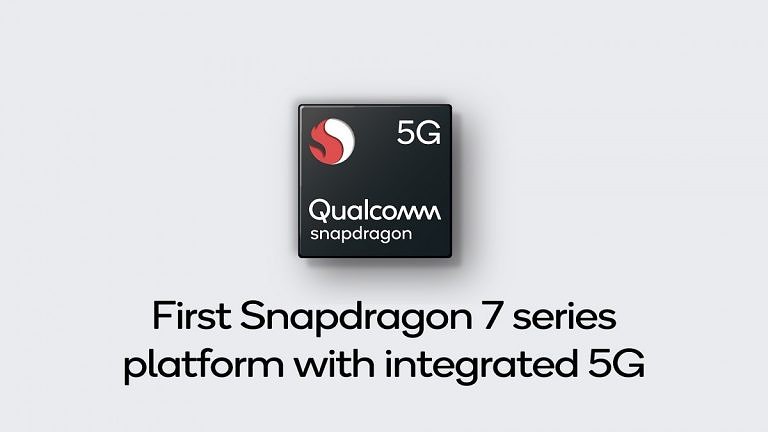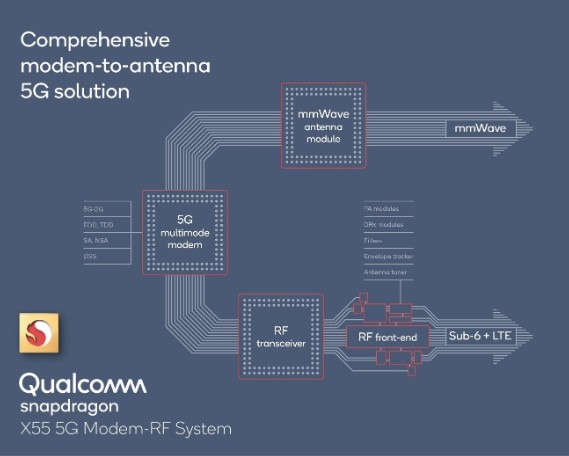There is no shortage of interesting announcements coming out of IFA 2019, with many key names in the mobile space cluing us in on their upcoming product line-ups. Qualcomm is making some important connectivity announcements of its own, shortly after its Samsung’s latest 5G-capable chipset reveal. The company has revealed that it will bring 5G to multiple tiers of Snapdragon chipsets, expanding 5G connectivity beyond their flagship 8-Series platform. On top of that, Qualcomm has now given a name to their “system-level” approach to 5G connectivity, while also announcing the first fully integrated, extended-range mmWave solution for 5G fixed wireless access.
As stated, Qualcomm is looking to expand its portfolio of 5G mobile platforms by integrating 5G connectivity into the 7-Series and 6-Series for 2020 devices, with the rollout aiming to support features and frequency bands globally. The company claims the upcoming mid-range chipsets will deliver best-in-class cellular performance, coverage, and power-efficiency at a global scale, supporting all key regions and frequency bands including mmWave and sub-6 GHz spectrum, TDD and FDD modes, 5G multi-SIM, Dynamic Spectrum Sharing, and Standalone (SA) and non-standalone (NSA) network architectures.

We also learned that the upcoming Snapdragon 7-Series chipset will be built on 7nm process technology, have 5G integrated into an SoC, and it will reportedly bring other premium-tier features including the next-gen Qualcomm AI engine and select Snapdragon Elite Gaming features. This is something which we’ve come to expect as flagship functionality increasingly makes its way to the company’s mid-range platforms. Qualcomm states that sampling to customers began in the second quarter of 2019, with commercial readiness of the platform expected for the fourth quarter of the year, and devices likely launching soon thereafter. Twelve leading OEMs and brands have been confirmed to be employing the upcoming 7-Series 5G platform, including OPPO, realme, Redmi, Vivo, Motorola, HMD Global, and LG Electronics.
Speaking of the aforementioned “system-level” approach to 5G, the company is now symbolically unifying their differentiated modem, RF transceiver and RF Front-end solutions under a single name: Snapdragon 5G Modem-RF systems. This is largely a new branding strategy, intended to better communicate the holistic, approach to connectivity that the company has invested in, and that is currently powering over 150 5G-ready designs that have either been launched or are currently in development (this figure includes not just smartphones, but also hotspots and other devices implementing 5G technology).

Finally, Qualcomm introduced the QTM527 mmWave antenna module for the Snapdragon X55 5G Modem-RF System. This is the world’s first fully-integrated extended-range mmWave solution for 5G fixed wireless access, enabling mobile operators to leverage their 5G network infrastructure in order to deliver fixed internet broadband services to homes and businesses. It further allows OEMs to develop more portable customer-premise equipment at scale, meaning competitive plug-and-play, multi-gigabit alternatives to cable and fiber that can be deployed on a roof or a window, thus bypassing the fiber deployment typically needed for in-home broadband.
Beyond these announcements, Qualcomm’s press release hinted that more details on the next-generation Snapdragon 8-Series 5G Mobile platform will be coming later this year. As always, stay tuned for the latest Qualcomm Snapdragon coverage.




